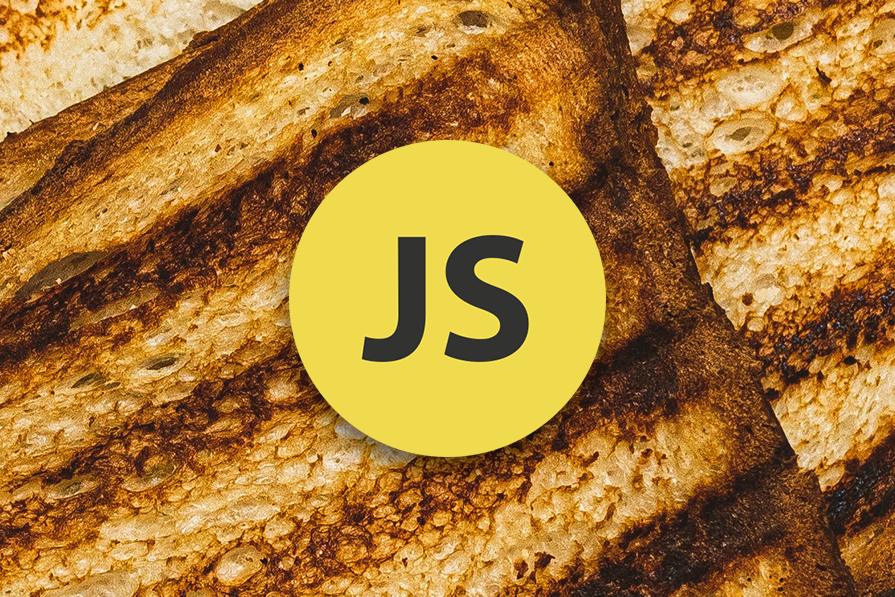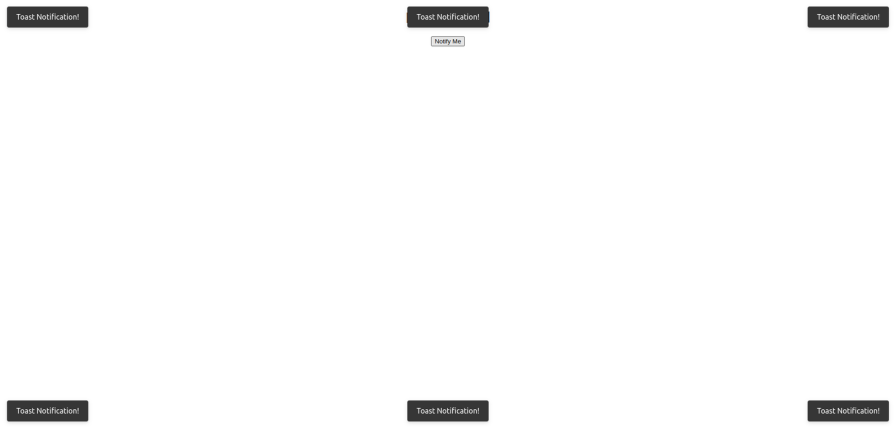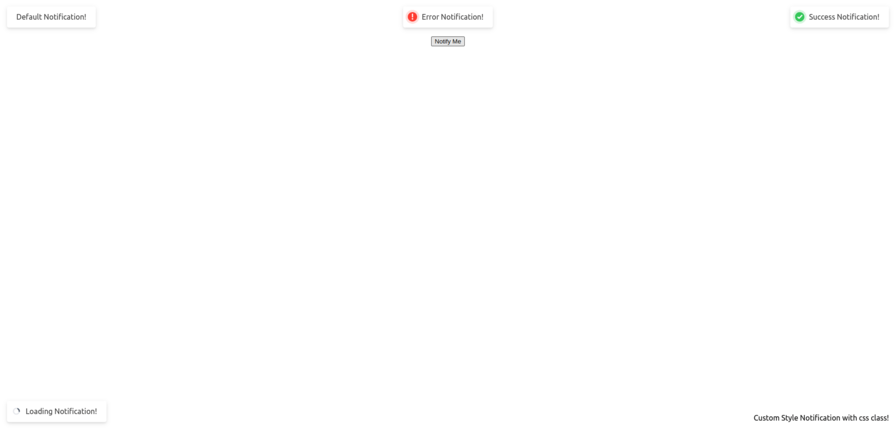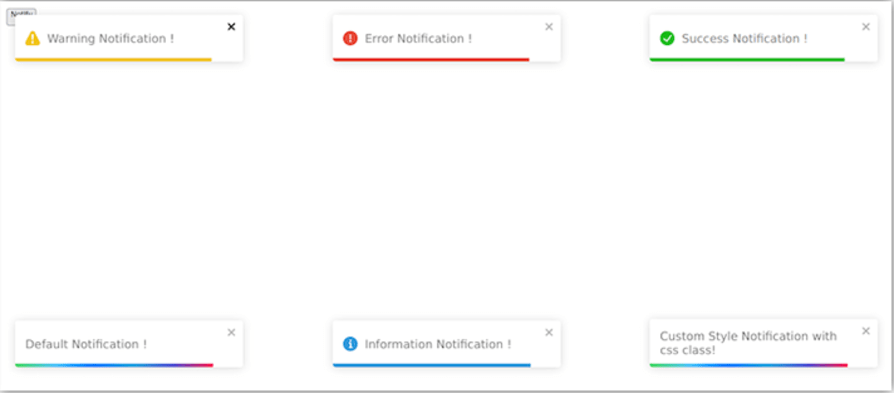
Toast notifications are messages that appear on the screen to provide feedback to users. When users interact with the user interface and perform certain actions, these operations may succeed, fail, or time out. Incidentally, we want to notify users of the status of these operations by using toast notifications.

Toast notifications don’t interfere with the user’s experience, so they’re a great way to notify users of such information. In this article, we will learn how to create toast notifications using Solid Toast.
The Replay is a weekly newsletter for dev and engineering leaders.
Delivered once a week, it's your curated guide to the most important conversations around frontend dev, emerging AI tools, and the state of modern software.
Solid Toast is a lightweight library for creating beautiful and customizable toasts in Solid.js. It provides a simple API to create, customize, and manage toast notifications.
Solid Toast is generally lightweight, easily customizable, and accessible. It also uses the Promise API and has support for SSR (server side rendering).
To create toast notifications with Solid Toast, we have to install the library first. Run any of the commands below in your root folder to install solid-toast library in your application:
npm install solid-toast yarn add solid-toast
After installation is complete, replace the code in your App.js file with the code below:
import toast, { Toaster } from 'solid-toast';
const notify = () => toast('Here is your toast!');
const App = () => {
return (
<div>
<button onClick={notify}>Notify Me</button>
<Toaster />
</div>
);
};
This is a simple example of how to use solid-toast in your Solid.js application. When you click the button, the toast notification with the message “Here is your toast!” is displayed.
Also, notice we rendered the Toaster component in the code above. This container renders all of our toasts:

solid-toast offers various options to customize your toast notifications. These options include toast types, toast positioning, duration, and styles. Let’s look at some of these options:
solid-toast provides different types of toasts or variants for various scenarios. This means that you can specify the toasts to show what kind of information is being displayed, i.e., a success toast will be different from an error toast notification.
This technique uses different stylings for each toast type to make it easier to understand the information and its intent. For instance, a toast type with a red checkmark icon typically implies a warning or error message, just as a toast message with a green checkmark icon typically implies a successful response.
You can use specific toast functions for the different toast message variants. To specify the variants or types, here are the different ways:
toast('Code syntax for blank toast');
The default toast is a blank toast. This means that the toast notification doesn’t come with any icon:

Although, you can set custom icons to the blank toast by using the icon option:
const notify = () =>
toast("Adding icon to toast", {
icon: "🖤",
});
![]()
toast.success('Code syntax for success toast');
The success toast is used for success notifications. Unlike the blank toast, it comes with a green animated checkmark icon:

The toast() function has an iconTheme options that allows you to style the icons as you see fit:
const notify = () =>
toast.success("Code syntax for success toast", {
iconTheme: {
primary: "#516beb",
secondary: "#fff",
},
});
The result of the code becomes the following:

toast.error('Code syntax for error toast');
This toast type is used for error or warning notifications. The toast has an animated red icon to show users that the information didn’t succeed as expected. It could also be used for network issues:

toast.loading('Page requests is loading...');
The loading toast variant is used to show a process or an operation is running or in process. The content can later be updated with either an error or success icon:

Solid Toast also provides the ability to create custom toasts, i.e., you can customize the appearance of your toast with different font styles and so on:
const notify = () =>
toast.custom(() => (
<div>
<h3>Custom Toast</h3>
<p>This is how to create custom toasts</p>
</div>
));

As seen in our screenshots above, all toasts are positioned at the top-right corner of the page by default. However, you can change the position of your toast notifications in the options. Solid Toast allows for six positions:
Depending on where you want to position your toast notifications, you can set its position like this:
const notify = () => {
toast("Toast Notification!", {
position: "top-left",
});
toast("Toast Notification!", {
position: "top-right",
});
toast("Toast Notification!", {
position: "top-center",
});
toast("Toast Notification!", {
position: "bottom-left",
});
toast("Toast Notification!", {
position: "bottom-right",
});
toast("Toast Notification!", {
position: "bottom-center",
});
};
Clicking the button will display all toasts with the different positions:

The beauty of the solid-toast library is that we can style any and all of our toast notifications to fit the theme of our webpage. This means that we can not only style our custom toasts but also style the different variants or types.
There are two ways we can style our toast notifications.
toast() functionWe can apply our styles to the toast function options. To do this, we can either apply the style directly or assign a className and then style the toast in our CSS modules. We can also change and style the icon as we see fit.
This is great because we can style our toast for a better user experience. We can have a green background for success toasts and a red background for error toast notifications. Let’s look at the code below:
const notify = () => {
toast.success("Toast Notification!", {
position: "top-right",
style: {
"background-color": "green",
"font-size": "24px",
},
});
toast.error("Toast Notification!", {
position: "top-left",
style: {
"background-color": "red",
"font-size": "24px",
},
iconTheme: {
primary: "#fff",
secondary: "red",
},
});
};
In the code above, we are also styling the icon in the error toast. This is because we want our icon to have a similar theme to the toast notification. The primary icon theme styles the body or background of the icon, while secondary icon theme styles the icon itself:

<Toast /> componentAnother way to style your toast notifications is to apply the style directly to the <Toast /> component. This gives you more control over your toast notifications. The difference is that when we apply the style to our <Toast /> component, all toasts inherently accept or inherit the styles until we explicitly apply a different style to the toast() function.
The Toast component accepts options like position, containerStyle, containerClassName, gutter, and toastOptions. Inside the toastOptions option, we can apply our styles directly or we can assign a className that we can style in our CSS file. See the code below:
<Toaster
position="top-center"
gutter={8}
containerClassName=""
containerStyle={{}}
toastOptions={{
className: '',
duration: 5000,
style: {
background: '#363636',
color: '#fff',
},
}}
/>
The gutter option is the space between individual toast notifications. This is so that when you have multiple toasts in the same corner, they are separated and don’t look clustered. See the code example below:
import styles from "./App.module.css";
import toast, { Toaster } from "solid-toast";
function App() {
const notify = () => {
toast.success("Toast Notification!", {
style: {
"background-color": "green",
"font-size": "24px",
},
});
toast.error("Toast Notification!", {
style: {
"background-color": "red",
"font-size": "24px",
},
iconTheme: {
primary: "#fff",
secondary: "red",
},
});
};
return (
<div class={styles.App}>
<Toaster
gutter={8}
toastOptions={{
duration: 5000,
style: {
background: "#363636",
color: "#fff",
},
}}
/>
<h1>Hello World</h1>
<button onClick={notify}>Notify Me</button>
</div>
);
}
export default App;
We gave our gutter an 8px margin. See the result below:

Promise Toast() function in Solid Toastsolid-toast allows us to handle promises by providing a toast() function that helps us display notifications when performing async operations such as network or fetch requests.
Let’s look at the code below:
const notify = () => {
const myPromise = new Promise((resolve) =>
fetch("https://jsonplaceholder.typicode.com/posts/1")
.then((response) => response.json())
.then((json) => setTimeout(() => resolve(json), 3000))
);
toast.promise(myPromise, {
loading: "Loading",
success: Got the data,
error: "An error occurred 😔",
});
};
When our fetch begins, the toast() loading variant is rendered to tell the user that the operation is ongoing. When the fetch completes, the success variant is shown with our success message. However, if an error occurs, the error variant is shown instead:

Creating toast notifications in Solid.js and React.js involves similar concepts, but the syntax and some implementations differ. In this section, we will look at some of the similarities and differences between creating toast notifications in Solid.js and React.js.
If you’re unfamiliar with creating toasts in React, this article, using React-Toastify to style your toast messages is a good place to get started. It teaches everything you need to know to create toast notifications in React using react-toastify.
[solid-toast](https://github.com/ardeora/solid-toast) is a popular library for creating toast notifications in Solid.js. Similarly, [react-toastify](https://www.npmjs.com/package/react-toastify) is a great library for creating toast notifications in React.js.
Both libraries have similar setup and installation processes. The two libraries have component wrappers and accept options. Although, when in Solid.js, the component wrapper is <Toaster />, while the component wrapper is <ToastContainer /> in React.js.
Solid Toast and React Toastify libraries allow you to style toast notifications either individually in the toast() functions or generally in the component wrappers. Additionally, both libraries have different toast variants or types and allow six positions.
Finally, both Solid Toast and React Toastify libraries have promise toast functions for handling promises use cases.
Even though Solid Toast and React Toastify allow toast notifications to be positioned in six different positions, their method of implementation differs.
In Solid.js, you can assign a position this way:
const notify = () => {
toast("Default Notification!", {
position: "top-left",
});
toast.success("Success Notification!", {
position: "top-right",
});
toast.error("Error Notification!", {
position: "top-center",
});
toast.loading("Loading Notification!", {
position: "bottom-left",
});
toast.custom("Custom Style Notification with css class!", {
position: "bottom-right",
className: "toast-message",
});
};
While in React.js, assigning toast positions is done this way:
const notify = () => {
toast.success("Success Notification!", {
position: toast.POSITION.TOP_RIGHT,
});
toast.success("Success Notification!", {
position: toast.POSITION.TOP_CENTER,
});
toast.success("Success Notification!", {
position: toast.POSITION.TOP_LEFT,
});
toast.success("Success Notification!", {
position: toast.POSITION.BOTTOM_RIGHT,
});
toast.success("Success Notification!", {
position: toast.POSITION.BOTTOM_LEFT,
});
toast.success("Success Notification!", {
position: toast.POSITION.BOTTOM_CENTER,
});
};
Additionally, in React Toastify, variants have default background styles, while in Solid Toast, all toasts are blank by default. Only the icon themes are animated and styled in Solid Toast.
Furthermore, Solid Toast has only five variants: default, success, error, loading, and custom. React Toastify has six: default, success, error, warning, info, and custom.
See images below:


Finally, React Toastify has a hook called useNotificationCenter. This hook allows you to build a notification center where you can handle a series of toast notifications and perform certain methods and functions on them, like mapping, sorting, and so on. Solid Toast doesn’t have this feature.
Solid Toast provides a simple yet powerful way to add toast notifications to your Solid.js applications. With its easy-to-use API and customizable options, you can create sleek notifications that fit seamlessly into your application’s design and enhance the user experience.
In this article, we looked at the different variants or toast types that Solid Toast has. We also looked at how to style our toast notifications and assign different positions to the toasts. By following this article, you can quickly install and begin to use Solid Toast in your Solid.js application.
Debugging code is always a tedious task. But the more you understand your errors, the easier it is to fix them.
LogRocket allows you to understand these errors in new and unique ways. Our frontend monitoring solution tracks user engagement with your JavaScript frontends to give you the ability to see exactly what the user did that led to an error.

LogRocket records console logs, page load times, stack traces, slow network requests/responses with headers + bodies, browser metadata, and custom logs. Understanding the impact of your JavaScript code will never be easier!

AI-first debugging augments traditional debugging with log clustering, pattern recognition, and faster root cause analysis. Learn where AI helps, where it fails, and how to use it safely in production.

Container queries let components respond to their own layout context instead of the viewport. This article explores how they work and where they fit alongside media queries.

React Server Components vs Islands Architecture: Learn how each reduces client JavaScript, impacts hydration and interactivity, and which trade-offs matter for production performance.

Large hosted LLMs aren’t always an option. Learn how to build agentic AI with small, local models that preserve privacy and scale.
Would you be interested in joining LogRocket's developer community?
Join LogRocket’s Content Advisory Board. You’ll help inform the type of content we create and get access to exclusive meetups, social accreditation, and swag.
Sign up now